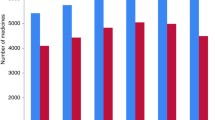Abstract
Import testing of medicines is performed in the middle of the legitimate supply chain when a product enters a country. Risks, however, are identified in the illegitimate supply chain and in the trade within a country. Hence, import testing does not add any significant value to the quality and safety of drugs nor reduces risks, provided the manufacturers apply good practices, for example, Good Manufacturing Practices (GMPs) and Good Distribution Practices (GDPs). The consideration to implement additional regulations does not correlate with the increasing convergence between National Regulatory Authorities (NRAs) and international harmonization, for example, Pharmaceutical Inspection Co-Operation Scheme (PIC/S) and International Council for Harmonisation (ICH). This publication reflects the historical application of import testing and today’s practice, concerns, and misconceptions of this redundant procedure. It explains why postmarketing surveillance testing is better suited to control the quality of medicines, addressing highly relevant concerns: counterfeits and supply interruptions.
Similar content being viewed by others
References
Roenninger SK, Garbe JHO. Import testing turned into an unnecessary limitation of patient access to medicines as risks are managed effectively. Pharm Policy Law. 2016;18:141–156.
Garbe JHO, Ennis K, Furer GM, Jacobs Maria G, Roenninger SK. Import testing of pharmaceutical products has limited safety benefits and can add risk to patients. Pharm Technol Eur. 2015;27:s6–s20.
WHO. Model certificate of a pharmaceutical product. http://www.who.int/medicines/areas/quality_safety/regulation_legislation/certification/modelcertificate. Accessed February 10, 2017.
Pharmaceutical Inspection Co-Operation Scheme (PIC/S). Quality system requirements for pharmaceutical inspectorates. PI 002-3. September 25, 2007.
European Directorate for the Quality of Medicines (EDQM). The advantages and benefits of the CAP surveillance project, PA/PH/CAP (13) 32 2 R. November 2013.
European Directorate for the Quality of Medicines (EDQM). How the OMCL Network supports the implementation of the Council of Europe MEDICRIME Convention. PA/PH/OMCL (09) 87 4 R. February 2016.
WHO. Considerations for requesting analysis of medicines samples. Draft for Comment. November 2016.
EMA. Inspections and human medicines pharmacovigilance division. Results of the sampling and testing programme for the year 2014. EMA/788109/2015. June 2016.
ICH. Q9: quality risk management, step 4 version. November 9, 2005.
International Federation of Pharmaceutical Manufacturers (IFPMA). Appropriate control strategies eliminate the need for redundant testing of pharmaceutical products. Position paper.
Garbe J, Roenninger S. The value of import testing versus surveillance testing. PDA Lett. 2015;LI:34.
Ennis K, Elder D. Importation testing: an unnecessary burden on industry? Eur Pharm Rev. 2015;20:5.
Author information
Authors and Affiliations
Corresponding author
Rights and permissions
About this article
Cite this article
Garbe, J.H.O., Jacobs, M.G. & Rönninger, S.K. Import Testing: An Outdated Practice? Opportunities for Improved Access to Safe and Efficient Medicines. Ther Innov Regul Sci 51, 620–624 (2017). https://doi.org/10.1177/2168479017701980
Received:
Accepted:
Published:
Issue Date:
DOI: https://doi.org/10.1177/2168479017701980




